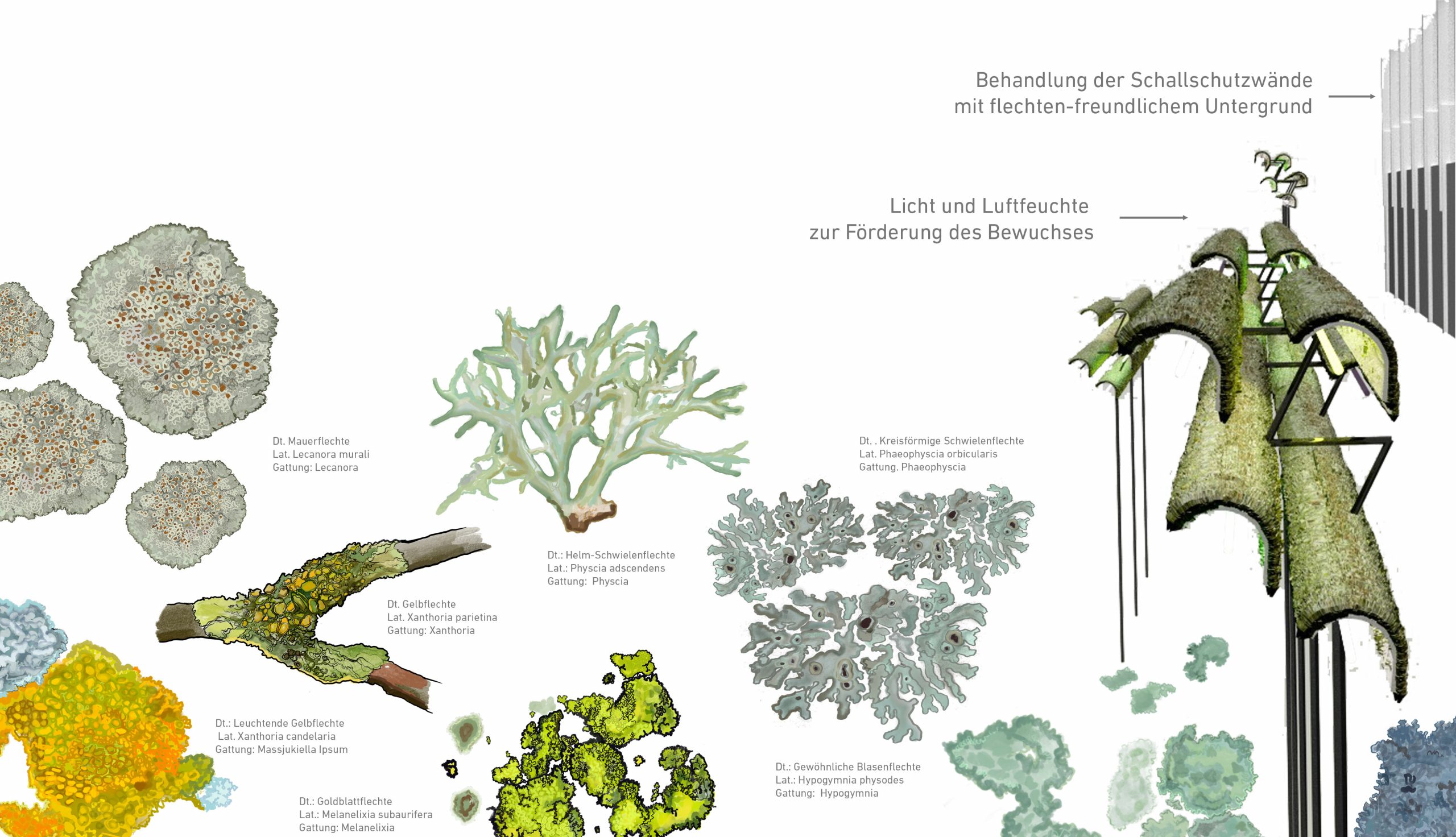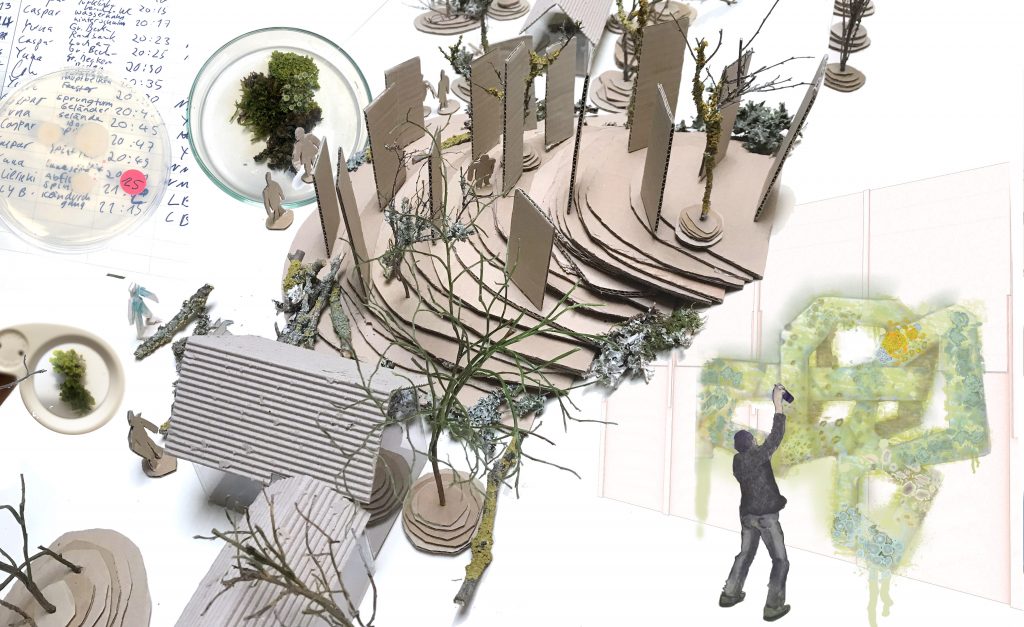is the title of artistic and landscape planning interventions around the noise barrier of the RRX rail line across Düsseldorf. The design was selected as winner by the competition jury together with the proposals from two other teams.


The CONTACT ZONE responds in a multidimensional way to the different situations with the components light, vegetation, and encounter.
A rhythmic illumination in the cycles of the wind is the leitmotiv of our design. Wind-harvesting along the track captures and visualizes the airstream of passing trains. Animated, pulsating light strips and sound installations accompany the urban spaces along the track. Linear light elements are erected in front of the noise barriers and light up in the rhythm of the airflow, which is picked up by small microphones. Light intensity, orientation (to the green? To the people?) and relation to the surrounding urban space and react to different light conditions. For shaded places, as well as under bridges or in tunnels, we propose another, animated form of lighting, which also absorbs the energy of the Fahrtwind, but let it live on in the urban space as a source of light for people and plants animated. For this purpose, we propose compact, small-scale lighting installations that function according to the principle of cellular automata.
In this way, the lamps can carry the energy of the airstream profitably for people and plants into the urban space.
The lighting elements and installations should not only illuminate the urban space for people, but at the same time also enable and promote cryptogamous growth – algae, lichens, mosses – on the noise barriers, accompanying retaining walls, and the luminaires themselves. These bind huge amounts of carbon dioxide and nitrogen from the atmosphere and thus also positively influence the urban climate. The amount of nitrogen fixed by cryptogamic layers and thus supplied to the soil and other living organisms is equal to half of the nitrogen naturally fixed on land, which is particularly important for the development of ecosystems, as nitrogen is often the limiting nutrient component. They are therefore extremely effective in the smallest area of urban space.
The proposal was made by a team Green Noise, Berlin (Ursula Damm), Dr. Klaus Fritze, Rudolph Langner – Station C23 – Architecture and Landscape Architecture, Andreas Hecker (Bauhaus University Weimar), Felix Bonowski.

